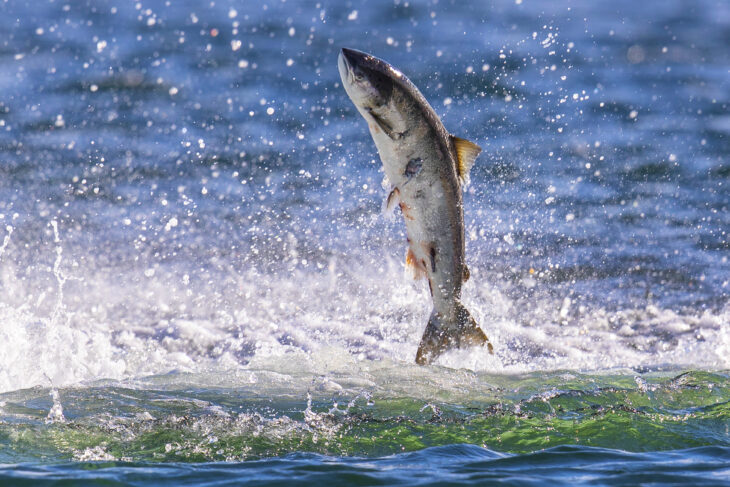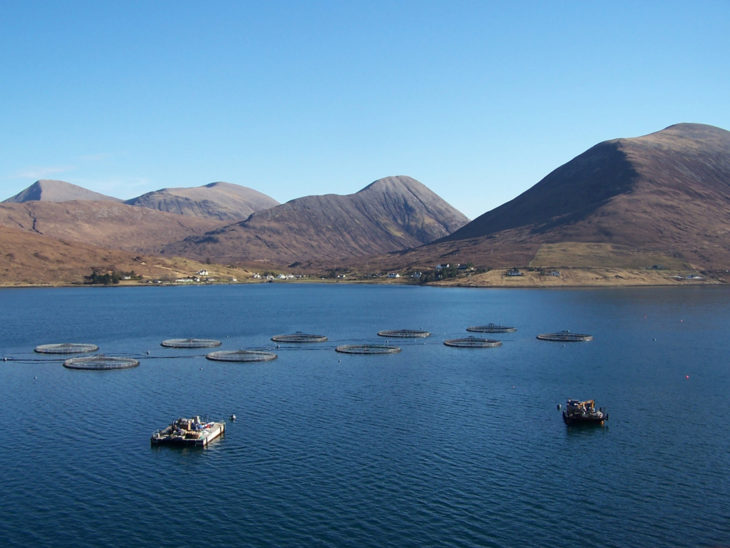New recommendations to protect wild salmon and sea trout
The Atlantic salmon is an iconic species that has provided the basis for a rich cultural history of salmon fishing throughout Scotland. Populations of Atlantic salmon, however, have been in steady decline throughout Scotland, and the North Atlantic, since at least the 1970s.

The most recent population estimates in 2019 were the lowest on record, and all signs suggest that this trend is set to continue.
The current status of Atlantic salmon populations in Scotland is concerning. It is now vital for their recovery that meaningful action is taken. Atlantic salmon have a ‘diadromous’ migration that takes them from freshwater to the marine environment and back again. That exposes them to a number of pressures, many of which are within our capability to reduce, if not eliminate. These include low river water quality and hydroelectric dams.
One of the key pressures facing Atlantic salmon is salmon aquaculture, an industry that is widespread throughout the west coast of Scotland, Orkney and Shetland.
Aquaculture sites can be found in both the freshwater and marine environments that wild salmon use. They can impact wild populations through increasing the number of parasites in the water (i.e. sea lice) and genetic intro-gression – caused by escaped farmed fish and wild fish mating.
The Scottish Wildlife Trust has long advocated for better protection of wild fish from salmon farming, and the need for appropriate regulation of salmon farming.
In 2018, the Scottish Parliament held two inquiries into the environmental impacts of salmon farming in Scotland, and the findings of both highlighted the significant threat salmon farming poses to wild salmonids (Atlantic salmon and sea trout). At present, there are no regulations to protect wild salmonids from salmon farming – a clear gap highlighted in both parliamentary inquiries. Subsequently, the recommendations from both inquiries emphasised reform in this area.

In response, the Salmon Interactions Working Group (SIWG) was established in October 2018. This group was tasked with providing recommendations on how to improve salmon farming regulation to ensure wild salmonids are protected. This was to be the first of a series of working groups looking at the different pressures facing Atlantic salmon.
The group was made up of Government, regulator, industry, angling and conservation representatives (including myself through my role as chair of Scottish Environment LINK’s Aquaculture Subgroup), and over the course of 18 months the SIWG met regularly to discuss the findings of the parliamentary inquiries, review existing regulation, and identify opportunities for improvement.
The range of views held by SIWG members meant that finding a set of recommendations that would provide meaningful improvements to regulation and be unanimously supported would be challenging. Nonetheless, on 5 May this year, their report was published with a set of 42 recommendations. If acted on, these would provide a significant step towards ensuring the protection of wild salmonids is integrated into the existing regulatory system.
The SIWG report has now been sent to Scottish Ministers, who will decide which recommendations to take forward.
It is our hope that they will respond to the proposed recommendations as soon as possible, and provide an expected time frame within which the agreed actions will be achieved.
The SIWG recommendations include the following positive steps. The full list can be found here.
- Reforming the regulatory system to provide protection to wild salmonids. The new system should be fully resourced and meet the test of being robust, transparent, enforceable and enforced.
- A review of all sea lice treatments to ensure decisions are evidence-based and ensure the wider environment is protected.
- Existing sites that have an adverse impact on wild salmonids should be subject to tighter regulation or, if unable to reduce impact, be relocated.
- A range of new licensing conditions, which include:
- the recording and reporting a weekly sea louse count;
- the monitoring of sea lice levels in the environment (not just farmed salmon);
- the requirement to contribute to research aimed at understanding the migratory behaviour of wild salmonids; and
- 100% of all farmed fish to be retained within cages.
- Fines relating to escapes and sea lice to be invested into wild salmonid conservation work.
Dr Sam Collin, Marine Planning Officer
Find out more about our work to promote healthy, living seas in Scotland
Help protect Scotland’s wildlife
Our work to save Scotland’s wildlife is made possible thanks to the generosity of our members and supporters.
Join today from just £3 a month to help protect the species you love.
Preface
The Atlantic salmon is an iconic species that has provided the basis for a rich cultural history of salmon fishing throughout Scotland. Populations of Atlantic salmon, however, have been in steady decline throughout Scotland, and the North Atlantic, since at least the 1970s. The …
